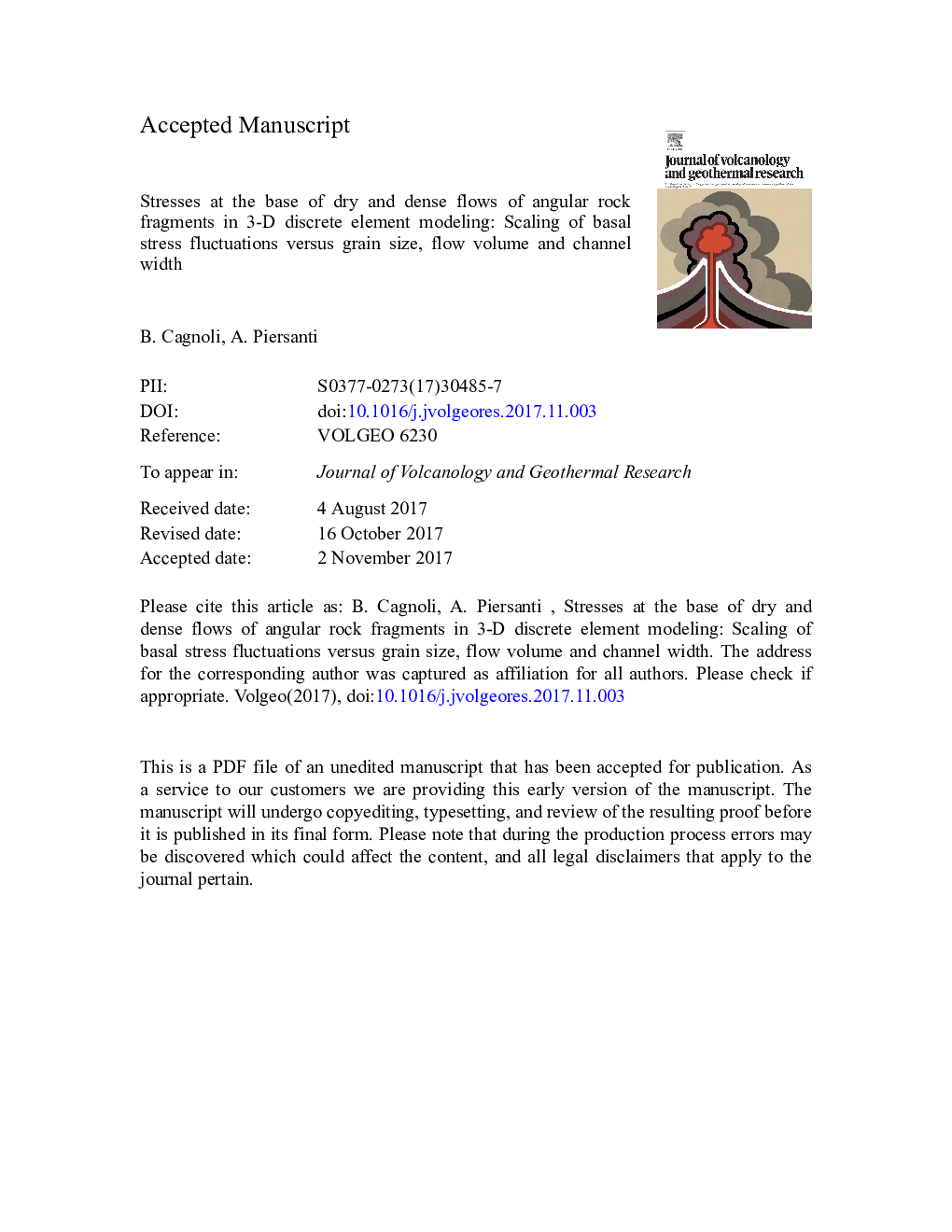| Article ID | Journal | Published Year | Pages | File Type |
|---|---|---|---|---|
| 8911428 | Journal of Volcanology and Geothermal Research | 2018 | 50 Pages |
Abstract
We simulate granular flows of angular rock fragments by means of a three-dimensional discrete element modeling to study the basal stresses that these flows exert on the subsurface. These granular flows have different grain sizes and different flow volumes and they model dry rock avalanches and dense pyroclastic flows. These flows travel on four different concave-upward chutes that represent channels on a mountainside or on the flank of a volcano. Each chute has a different width. The stress data demonstrate the validity of a linear relation between two scaling parameters: D and Ï. Parameter D is a scaled basal stress deviation that is equivalent to a scaled particle agitation. Particle agitation is ultimately responsible for the energy dissipation that governs the mobility of dense geophysical flows in nature. Parameter Ï contains grain size, flow volume and channel width. This second parameter is equal to the product of the reciprocal of characteristic numbers of fragments in granular flows. Since these numbers of particles are dimensionless, the linear relation is valid at any scale, either in the laboratory or in nature.
Related Topics
Physical Sciences and Engineering
Earth and Planetary Sciences
Geochemistry and Petrology
Authors
B. Cagnoli, A. Piersanti,
